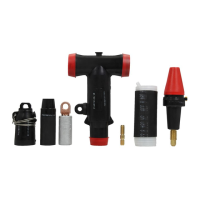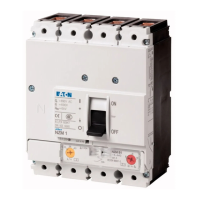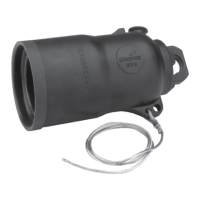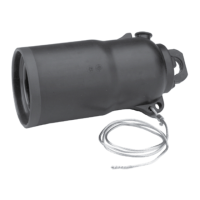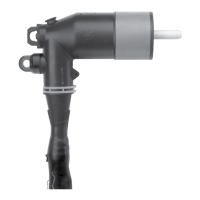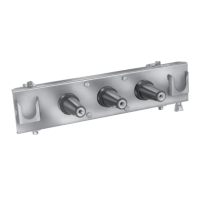Installation
Installation location
The transformer should be located on a concrete pad of
sufficient strength to support the weight of the unit. The
pad must be level. The location of the transformer, whether
indoor or outdoor, should provide for adequate accessibility,
ventilation and ease of inspection. The transformer should
be at least 24 inches from any obstruction. These are
the recommendations of the manufacturer for operation
purposes; see your local codes for additional guidelines.
Location in areas of corrosive chemicals should be avoided.
These substation transformers are built to operate at
altitudes up to 3300 feet at 30°C average and 40°C
maximum ambient, unless otherwise specified. Before
operating a standard transformer at higher altitudes, contact
your factory representative.
Adequate ventilation must be provided. For indoor
installations, room air inlets should be located at floor level;
the air outlets should be located as high as the room will
permit. The number and size of the air inlets depends upon
the rating of the transformer. In general, about 20 square
feet each of inlet and outlet area should be provided for
each 1000 kVA of transformer capacity. If the ventilation
system is adjustable, it should be locked permanently open
to avoid overheating of the transformer in case of operator
error.
Connections
Connections must be made without placing undue stress
on the bushing terminals. Conductors should be securely
fastened in place and supported properly, with allowance
for expansion and contraction. Make sure that the tap
connection is proper for the required voltage. Changes in
tap connections must be done ONLY with the transformer
high voltage and low voltage circuits completely
"DE-ENERGIZED". Safely verify that there is no voltage
present at the terminals.
WARNING
Do not change connections on a transformer that is
energized. Ground all circuits before making any trans-
former connection. Failure to observe precautions when
making connections can result in exposure to high volt-
ages, which can cause death, severe personal injury or
damage to the equipment.
WARNING
Do not make any connections, except as authorized by
the nameplate or schematic. Improper connections
can result in severe personal injury and damage to the
equipment.
Transformers equipped with an internal terminal board are
normally shipped with the higher voltage connected, unless
otherwise specified by the customer.
A secure and effective low resistance ground is essential
for protection. The transformer must be grounded perma-
nently by connecting a heavy ground cable to the ground
pad located at the bottom of the tank. If the transformer is
designed for operation in a solidly grounded neutral system,
the neutral connection should be solidly and permanently
grounded with minimum resistance.
WARNING
Improper grounding may result in personal injury or
damage to the equipment.
Lightning arresters are recommended for every trans-former
installation. Arresters of proper rating should be located as
close as possible to the transformer terminations.
When alarm contacts or controls are supplied with the
transformer accessories, a connection box may be provided
to facilitate termination of the customer's cable or conduit.
Final inspection
The final inspection can be done in three major steps:
Electrical, Internal and External.
WARNING
Do not tamper with interlocks, alarm or control circuits.
Doing so can produce unsafe conditions for operators or
result in damage to the equipment.
Electrical inspection should determine that:
1. All external connections have been made properly
(phasing of connections to terminal bushings, etc.).
2. All connections are tight and secure.
3. All accessory contact circuits are operational.
4. Current transformer circuits, if supplied, have secondar-
ies either shorted or connected through their load.
5. Tap changer is operative and properly positioned.
6. The correct transformer ratio exists for units furnished
with internal terminal board.
7. There is no grounding of windings that are not
intended to be grounded. A 1000-volt megger test is
recommended.
8. There is continuity in all windings.
9. The dielectric strength of the insulating liquid is
30 kV minimum when new. (Refer to section for
"Testing Insulating Liquid" in this manual.)
10. The neutral and ground connections have been properly
made.
2 SubStation tranSformer inStallation and partS replacement information MN202002EN JUNE 2016

